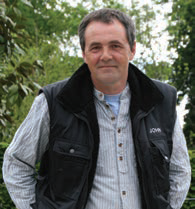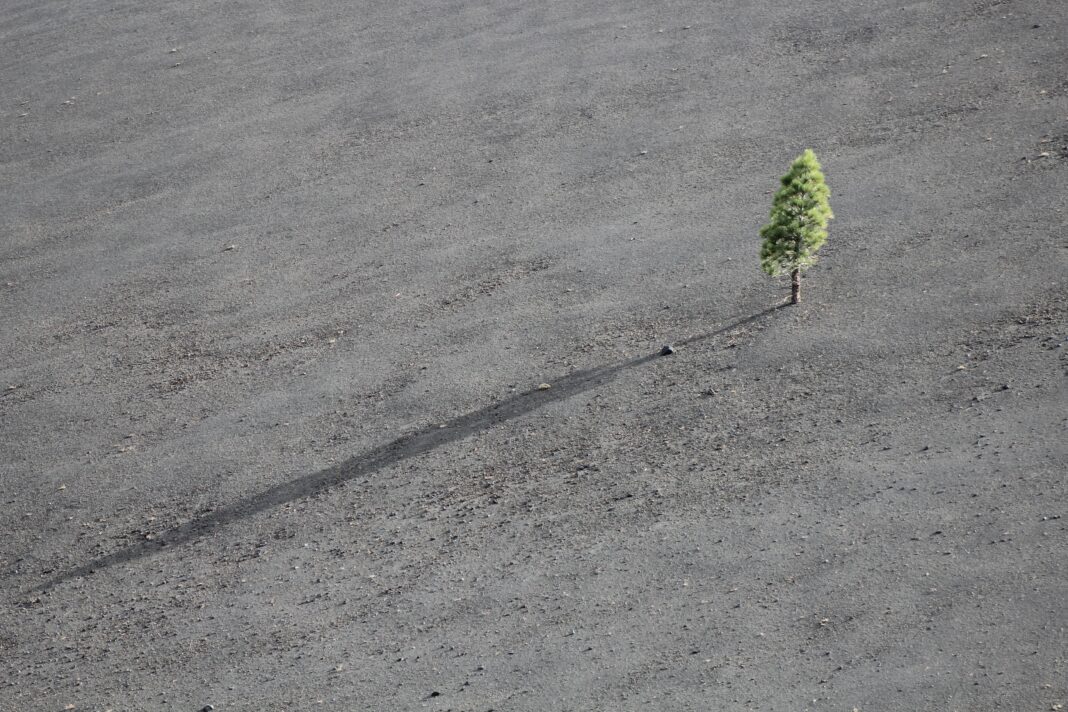Renowned nurseryman, tree specialist and owner of Annaveigh Plants, John Murphy, doesn’t mince his words in a call to combat climate change with several sensible but urgent planting initiatives
With the global acceptance of climate change and the topical nature of the subject, I have seen many articles that question what we are going to plant in the future to cope with the changing climate. To me that is meaningless. We have no way of knowing the mix of climatic factors that will influence our future palette of plants, to pretend otherwise is folly. We don’t have time to determine how to adapt using new species, we must combat it with pragmatic and sensible actions.
Today we plant trees to suit the buildings, the services, the roads, and small gardens. Decisions are typically framed by aesthetics and limited space made available. The results are poor specimens, in poor health with limited canopies, poor carbon sequestration ratings and an extremely low Leaf Area Index (leaf cover).
Unsurprisingly, the most sought-after area in the capital, Dublin 4, has the highest leaf area Index. Most of the trees were planted here well before the days of root barriers and litigation. This area is filled with London Planes, Beech, Sycamore, Oak, Blue Cedars, Pinus Sylvestris and other large, majestic trees, many of which are in people’s gardens. These large trees have an A rating for sequestering carbon. Conversely, most urban trees specified in contemporary landscape projects have C and D ratings. Despite having one of the highest carbon sequestration ratings, very few landscape architects are brave enough to suggest planting Sycamore, but this is what’s needed. Sycamore, along with other A-raters such as Oak, Fagus, Liriodendron, Liquidambar, Tilia, Acer Platanoides and Pinus Sylvestris are primary tree combatants in the fight against climate change. If you’re not up to speed with tree ratings, check out ‘The Barcham eco tree tag’.
So, how do we ensure that urban tree planting is ramped up quickly and how should it be controlled? I heard of a recent incident where 300 trees were value engineered out of a rural design and build housing project. This is a similar story across the country and nothing new to anyone in the sector. Trees being omitted, downsized, and switched is such a part of landscape development in Ireland that it’s almost expected. If we are to ensure urban tree planting is ramped up, then it’s time for robust legislation and enforcement. Given the impending climate disaster and the shocking lack of oversight and responsibility in the landscape, I personally think such actions should be criminalised.
The English Woodland Trust produced an Emergency Tree Plan for the UK in 2020. One sound recommendation was: ‘Every local authority should commit to a minimum 30% tree canopy cover for new development land. For example, a developer levy could stipulate that a minimum of 10no. 14-16cm, A rated trees are planted for every new house constructed’. That would seem like a sensible starting point for us.
An alternative approach could be the use of leaf area index (LAI) requirements for a site. These would be included at planning and followed throughout the project. This is a developing technology, and anyone interested should visit The Centre for Sustainable Asian Cities School of Design and Environment. If introduced, a developer would be able to get a sliding VAT rebate for every 5% achieved over the LAI planning requirements. This would lead to plenty of extra planting, and might help redirect common value engineering practices that typically impact the landscape more than any other area of a build project. Furthermore, Government policy should prioritise the protection and restoration of existing trees and ancient woodland alongside any expansion plans. There is evidence that large, old trees store significantly larger levels of carbon than smaller trees. A single large and well-established tree has the capacity to sequester the same amount of carbon over one growing season as is fixed in an entire medium-sized tree.
Local authorities must be given suitable powers to avoid the removal of any tree on any land in non-woodland areas. Unless there are overriding arboricultural or health and safety needs for felling, any trees on a development site must be maintained. If a tree must be removed, local authorities should implement minimum replacement planting ratios, which stipulate that for every non-woodland tree removed, new trees should be planted with the combined girth of the tree felled.
It is not only urban development that needs to be planting as many trees as possible. Rural Ireland also needs to take a close look at the lack of trees to combat climate change. In 2017, the estimated land coverage of hedge rows and non-forest woodland was 4.9%, well down the EU charts. Looking across any of our local farmland, there are pitifully few trees, and miles of barren hedgerows with no trees at all. A new agri-environmental scheme was released this week with the headline, ‘€10,000 per farmer in new Agri scheme’, yet there is no compulsion for farmers to take on the tree/hedge planting module. With the present Ash situation, where 85% of all Ash will be dead in 3-15 years, this is a lost opportunity. The Government should either make it mandatory that all farmers with Ash on their land must plant at least 5 replacement trees for every lost mature Ash tree, or introduce a separate emergency scheme to combat the loss. These measures could make up part of the new Agri Environmental Scheme, where not planting the trees would attract a financial penalty. There is no point in encouraging tree planting through the present schemes if the net result is merely the replacement of the Ash, we need an aggressive approach to this problem. By the way, our farm grows 100 acres of trees and does not qualify for the agri-environmental schemes. We are probably one of the cleanest farming practices in Tipperary!
Two further aspects of the farm schemes that should be reconsidered are: the sole use of Irish native trees, which rules out Sycamore and Beech; and the use of only Irish seed stock. I am not suggesting we import lots of stock, but during the past two years we have only been able to supply Alnus and Betula that conform to the regulations. The remaining 10 options were not available with Irish Provenance. Perhaps we could consider using UK Provenance while we ramp up production, but this requires labour, which suffers from low pay and availability. What the industry needs are incentives to increase production and the Government needs to get involved.
At the same time as encouraging planting, the removal of mature hedgerows is still legal in Ireland between September and February. I have personally witnessed the destruction of at least 7km of old hedgerows on two recently purchased farms. Even with the present laws, that require you to plant the same length of hedge removed elsewhere, the replacement of a mature hedge with small whips will take 20-50 years to reach the same level of carbon removal. In the UK it has been illegal to remove any hedgerow over 20m for years, and to do so attracts large fines and restoration costs. It is estimated, based on existing national statistics for hedgerow and non-forest woodland, that the carbon sequestered results in a net removal of 0.27-1.4 Mt CO2/year. This barbaric practice of removing mature hedgerows must be legislated against immediately.
There is a Chinese proverb that is being bandied about these days by environmental groups and trendy businesses, “The best time to plant a tree was 20 years ago. The second-best time is now.” This is fine, but we need action not marketing slogans. The whole sector should be promoting all types of planting, regardless of location. We need to plant now and throw aside the normal constraints. If this causes problems in 50 years, so what? At least we helped to mitigate some of the effects of climate change. Get rid of root barriers and the rest of the expensive nonsense associated with tree pit construction in urban areas. They cost far more than the trees themselves and the money saved can go towards more trees and proper topsoil for planting.
If the roots cause problems in the future, again, so what? We need trees in the ground now and as many as possible. All Local Authorities should have a yearly tree planting target funded by the central government. ✽
  |










